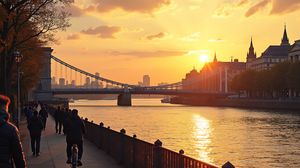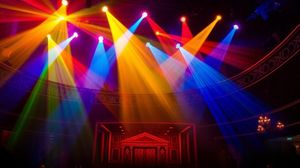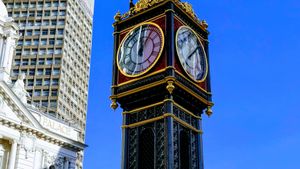
Chelsea Bridge is an elegant suspension bridge that spans the River Thames, linking the areas of Chelsea on the north bank and Battersea on the south bank. Originally opened in 1858, it was replaced by the current structure in 1937. It provides both vehicular and pedestrian crossings and is noted for its impressive views of the London skyline and the nearby Battersea Park.
The bridge is well-known for its architecturally charming design, making it a popular spot for photographers and sightseers. At night, its distinctive design is accentuated by the illumination of its lights, offering a picturesque sight over the River Thames.
An intriguing fact about Chelsea Bridge is its association with a historic misnomer. During its planning stages, it was originally referred to as "Victoria Bridge." However, due to the popularity of Queen Victoria at the time, it was eventually renamed to Chelsea Bridge.
The bridge is often associated with London's history as a hub of industrial activity. Its strategic location made it an important crossing point for goods and people moving between industrial sites and residential areas throughout the 19th and early 20th centuries.
Chelsea Bridge holds a unique place in pop culture, having been featured in various works of art and literature. Its distinctive look and strategic location have made it a frequent choice for filmmakers and authors depicting quintessential London scenes.

Making the Most of Your Visit:
Plan your visit for the evening or at dusk to see Chelsea Bridge beautifully illuminated. The reflection of the lights on the Thames makes for a breathtaking view and is a fantastic time to capture photographs.
If you're a fan of history or engineering, take a moment to appreciate the bridge's intricate Art Deco design elements. Its construction is a fine example of pre-war British engineering, and you can spot unique details if you look closely.
Don't miss the opportunity to stroll across the bridge and enjoy the panoramic views of the city skyline. The vantage point offers a particularly stunning view of the iconic Battersea Power Station, especially as the sun sets.
If you're interested in some local culture, take note that Chelsea Bridge has been immortalized in songs and films, often as a symbol of London itself. You might want to check out some popular references before your visit to enhance your experience.
After your bridge visit, head to nearby Battersea Park for a relaxing walk or a picnic. The park provides a lovely green oasis to unwind and offers some historical landmarks and sculptures of its own.

Visiting Times & Costs:
Chelsea Bridge, which connects the areas of Chelsea and Battersea, is open to the public 24 hours a day, seven days a week. There is no cost to access or use the bridge, making it freely available for both pedestrians and vehicles.
In terms of accessibility, Chelsea Bridge is a public road and pedestrian bridge, designed to accommodate both foot traffic and vehicle usage. However, individuals with specific mobility challenges should be aware that pedestrian access involves sidewalks alongside the vehicular lanes, which may require consideration of traffic conditions and potential noise.

Address & Map:

Nearby:























